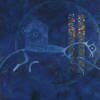Gallery |
 |
|
The Enigmatic Origins of Mythical Creatures: Folklore and its Influence on CultureMythical creatures have captivated the imaginations of people across different cultures for centuries. From the majestic dragons of Chinese folklore to the enchanting mermaids of ancient Greece, these mythical beings have left an indelible mark on our collective consciousness. In this article, we embark on a journey to unravel the enigmatic origins of these creatures and explore their profound influence on culture. For nursing coursework writers at https://top-papers.com/buy-coursework/, understanding the enigmatic origins of mythical creatures can provide valuable insights into the cultural beliefs and symbolism associated with these beings. By exploring the connections between mythology, folklore, and cultural identity, nursing students can gain a deeper understanding of the human experience and the diverse perspectives that shape healthcare practices. Join us as we delve into the captivating world of mythical creatures and their impact on culture. Understanding Mythology and Folklore To comprehend the origins of mythical creatures, it is essential to grasp the concepts of mythology and folklore. Mythology refers to a collection of myths, legends, and religious stories that form the foundation of a culture's belief system. These stories often explain the creation of the world, the relationships between gods and humans, and the moral values upheld by a society. Folklore, on the other hand, encompasses the oral traditions, folk tales, and superstitions passed down through generations. It includes stories of heroes, magical beings, and cautionary tales that offer lessons and reflect the values and customs of a particular community. Both mythology and folklore play a significant role in shaping cultural identity and preserving ancient wisdom. Ancient Mythical Creatures Ancient civilizations have bestowed upon us a rich tapestry of mythical creatures, each with its own fascinating origins. In Greece, we encounter the mighty Griffin, a creature with the body of a lion and the wings of an eagle, symbolizing strength and wisdom. The Greeks believed that Griffins guarded treasures and were associated with Apollo, the god of prophecy. The Egyptians revered the Sphinx, a majestic creature with the head of a human and the body of a lion, embodying mystery and guardianship. The Sphinx served as a symbol of protection, often found at the entrances of temples and tombs. Norse mythology presents us with the fearsome Jormungandr, a colossal serpent coiled around the world, representing chaos and destruction. The Vikings believed that the great serpent's movements caused earthquakes and storms. And in the Mesopotamian tales, we find the Lamassu, a winged bull with a human head, standing as a protective deity. The Lamassu guarded palaces and city gates, serving as a symbol of divine protection. Through exploring these creatures, we discover shared themes and motifs that transcend cultural boundaries, such as the association of mythical creatures with power, protection, and the blending of human and animal characteristics. Cross-Cultural Mythical Creatures Certain mythical creatures transcend cultural borders and appear in various traditions. Dragons, with their majestic forms and mythical abilities, are found in folklore across different continents. In Chinese culture, dragons are revered as symbols of power, luck, and prosperity. They are believed to bring good fortune and protect against evil spirits. In Western mythology, dragons are often depicted as fearsome beasts that hoard treasures and pose a threat to heroes. The variations and similarities in their representations and interpretations provide insight into our shared human experiences and universal archetypes. Mermaids, alluring half-human, half-fish beings, enchant us with their tales that span cultures worldwide. In some traditions, they are depicted as seductive temptresses, luring sailors to their doom. In others, they are benevolent creatures who bring luck and protection to fishermen. The phoenix, a mythical bird rising from the ashes, symbolizes renewal and rebirth in diverse civilizations. It represents the cyclical nature of life and the ability to overcome challenges. The presence of these creatures in different cultures has led to intriguing theories and explanations, such as ancient seafaring interactions or the collective unconscious, suggesting a deep-rooted human fascination with these mythical beings and the underlying human desires and fears they represent. Cultural Influence and Symbolism Mythical creatures have a profound impact on cultural beliefs, values, and practices. They often serve as symbolic representations of cultural ideals and fears. The Chinese dragon, for instance, embodies power, luck, and prosperity, deeply embedded in Chinese culture and celebrated during festivals like Chinese New Year. Dragons are depicted in vibrant dragon dances and intricate dragon boat races, where the community comes together to honor their cultural heritage. The unicorn, a creature of purity and grace, holds symbolic significance in medieval European folklore and continues to captivate hearts today. It is associated with beauty, innocence, and untamed wildness. These mythical creatures inspire artists, writers, and creators, finding their way into art, literature, and popular culture, reinforcing their influence and symbolism. They are featured in paintings, sculptures, and tapestries, immortalizing their allure and captivating audiences through their timeless presence. Modern Interpretations and Adaptations Mythical creatures continue to find relevance in modern times, captivating audiences through various mediums. Contemporary literature, films, and other forms of media explore these creatures' mystique and adapt them to new narratives. The Harry Potter series, with its diverse range of magical creatures, has garnered immense popularity, breathing new life into the realm of mythical beings. From the loyal and protective Hippogriffs to the mischievous and mysterious Nifflers, these creatures add depth and enchantment to the wizarding world. Blockbuster movies like "The Lord of the Rings" and "Game of Thrones" bring mythical creatures such as trolls, elves, and dragons to life, captivating audiences worldwide. Video games like "The Legend of Zelda" and "God of War" immerse players in fantastical worlds filled with mythical creatures and quests. These modern interpretations and adaptations showcase the enduring appeal and relevance of mythical creatures, allowing us to explore their enigmatic origins and experience their magic in new and exciting ways. Conclusion The enigmatic origins of mythical creatures hold an enduring fascination for humanity. They connect us to our ancestors, to the stories and beliefs that have shaped our cultures. Their influence transcends time and geography, permeating art, literature, and popular culture. By understanding the roots of these creatures and their cultural significance, we gain a deeper appreciation for the human imagination and the ways in which mythical creatures continue to captivate and inspire us. Embark on your own exploration of these enchanting beings, and uncover the rich tapestry of human heritage they represent. Let their tales ignite your curiosity and imagination as you delve into the enigmatic origins and profound influence of mythical creatures. |
 Eponaoils on cotton duck Sold! Available as a print from my online shop. |
 The Sidheoils on cotton duck Sold! |
 Celticoils on linen Sold! |
 Hydrefoils on cotton duck Sold! |
 Abbeyoils on cotton duck Sold! |
Stravinskyoils on cotton Sold! Available as a print from my online shop. |
 Shostakovichoils on cotton Sold! Available as a print from my online shop. |
 Beltaineoils on cotton duck Sold! |
Hoopdiddydiddyoils on cotton duck Sold! |
 Part Twooils on cotton duck Sold! |
 Can Serchoils on cotton duck Sold! |
 Dan y dwroils on cotton duck £349.00 |
 Samhainoils on cotton duck Sold! |
 Red Treeoils on cotton duck Sold! |
 The Mind's Eyeoils on cotton duck £349.00 |
 Cloisteroils on cotton duck Sold! Available as a print from my online shop. |
 la teneoils on cotton duck Sold! |
 Courtieroils on cotton duck £375.00 |
 Spirit of Loegresoils on cotton duck Sold! |
TroubadoursSwarbrick & Carthyoils on cotton duck Sold! |
 Swarbyoils on cotton duck Sold! |
 Jackoils on cotton duck Sold! |
 The Mill Racepen and ink drawing Sold! Available as a print from my online shop. |
 Emilyoils on cotton duck Sold! |
Thicketpen & ink drawing Sold! |
Festival (Meet on the Ledge)oils on canvas Sold! Available as a print from my online shop. |
Jazzbirds2006 Sold! |
Messiaen2006 £325.00 |
Rosella Red2007 Sold! Available as a print from my online shop. |
Up and Under / OZ #12007 £299.00 |